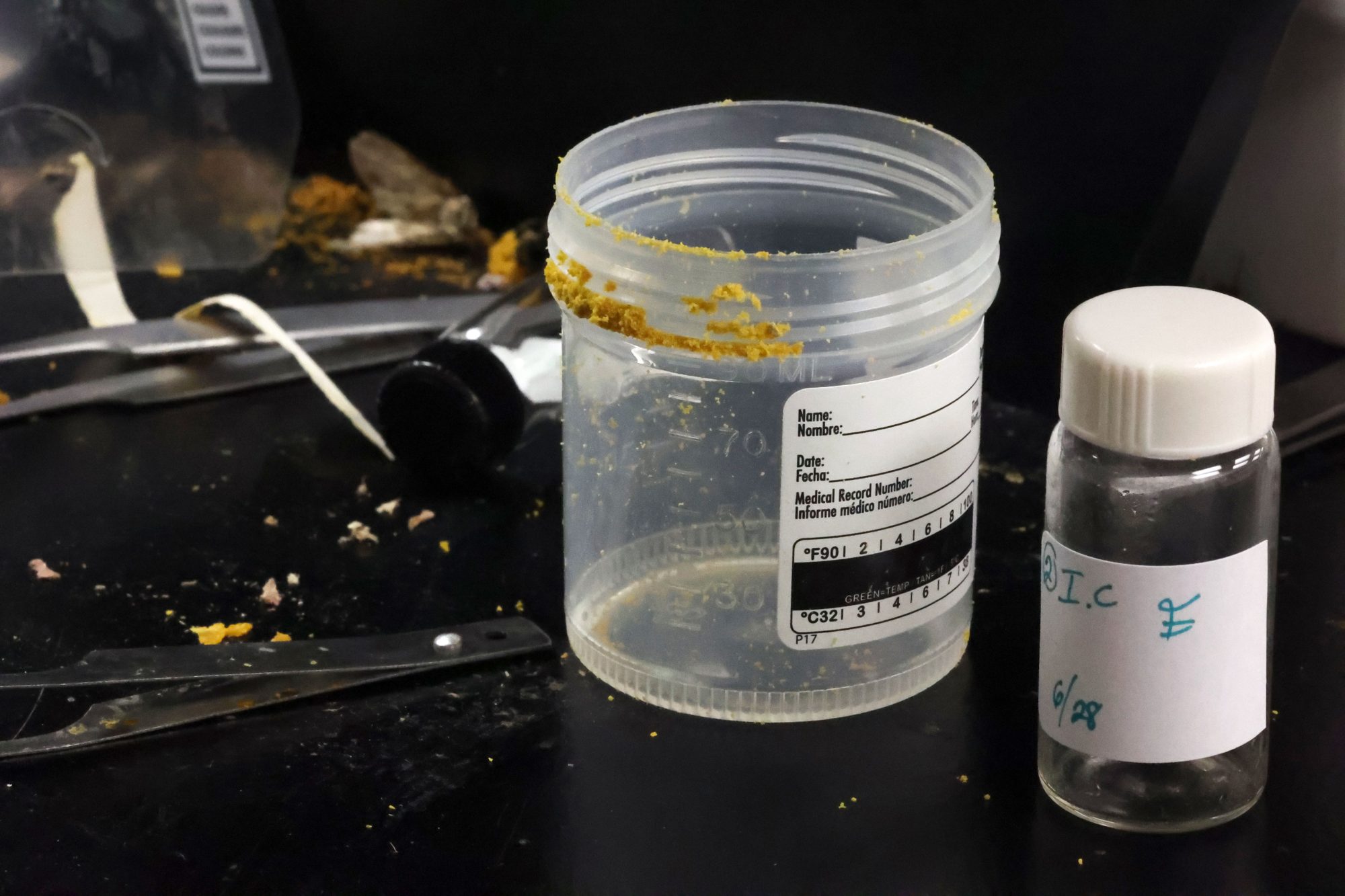SUNY Poly’s 10-week Summer Undergraduate Research Program (SURP) provides qualified undergraduate students with the opportunity to conduct research, as well as engage in an innovative hands-on experience to work with the university’s world-class faculty.
In 2023, 21 students are participating in the program, with the overwhelming majority hailing from SUNY Poly.
There are four SURP tracks students can be involved in: SURP-Funded Research, Faculty grant-funded SURP, Volunteer Positions and Research for Credit. And they are all supported by faculty and staff who are part of the 2023 SURP team: Dr. Carolyn Rodak; Dr. Ji Ung Lee; Dr. Rebecca Weldon; Elaine Garrett; Valerie Black; Dr. André Melendez; and Dr. Michael Carpenter.
Overall, the program provides many benefits to students.
“Students gain exposure to all aspects of the research process,” Dr. Weldon explains, “from coming up with a research idea, to seeing what others have done in the field (i.e. background literature), to learning new techniques in the lab. They also learn that you can’t predict what will happen. In science, the data is the data. You never know what it’s going to look like.”
Dr. Rodak adds that the students also learn that failure is part of the process.
“If it were easy and already done, it wouldn’t be research,” she said. “So, there’s this perseverance that’s required in the research realm. A lot of students struggle with that at the start, whether it’s learning to use a new device in the laboratory or developing a new protocol or technique that isn’t working.”
Exposure to research has also opened participating students’ eyes to the possibility of continuing their education and research opportunities at the graduate level.
Students also gain valuable communication skills. While they get this in the classroom or through projects, gathering with peers at the concluding poster session (where they describe what they’ve been working on) provides this experience in a more professional, high-stakes environment.
More info about SURP can be found on SUNY Poly’s website. Here is what SUNY Poly students are working on!
2023 SURP Projects
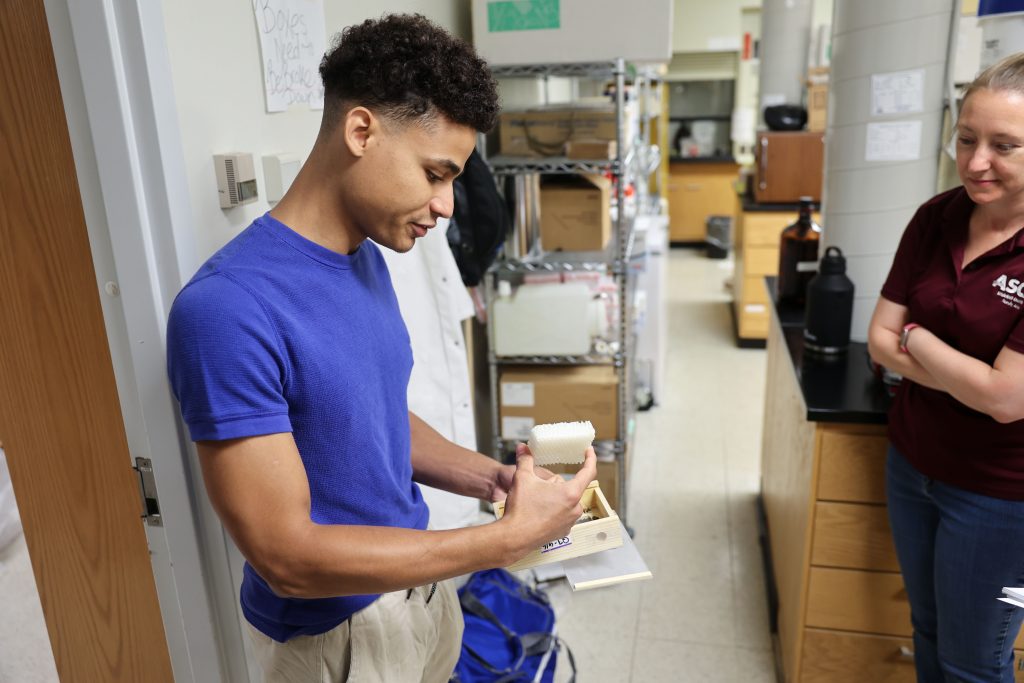
Darnell Weaver/Oscary Dotel
Under the advisement of Dr. Margarita Orlova, two SUNY Poly seniors – Darnell Weaver (Biology) and Oscary Dotel (Computer Science) – are working on projects involving bumblebees and honeybees, respectively.
Weaver’s project examines whether learning and memory play a part in the perception of queen behavior and pheromones in social insects and how role of learning differs across species with different social structures, while Dotel’s project is focused on identifying the effects of stressors, such as pesticides, pathogens, and nutritional deficiency, on the cuticular hydrocarbon (CHC) profiles of honeybee workers and queens, as well as the dysfunction it can cause within their social group.
Both students spoke highly of the SURP experience and said it was fascinating to see how even the smallest factors can impact bee behavior.
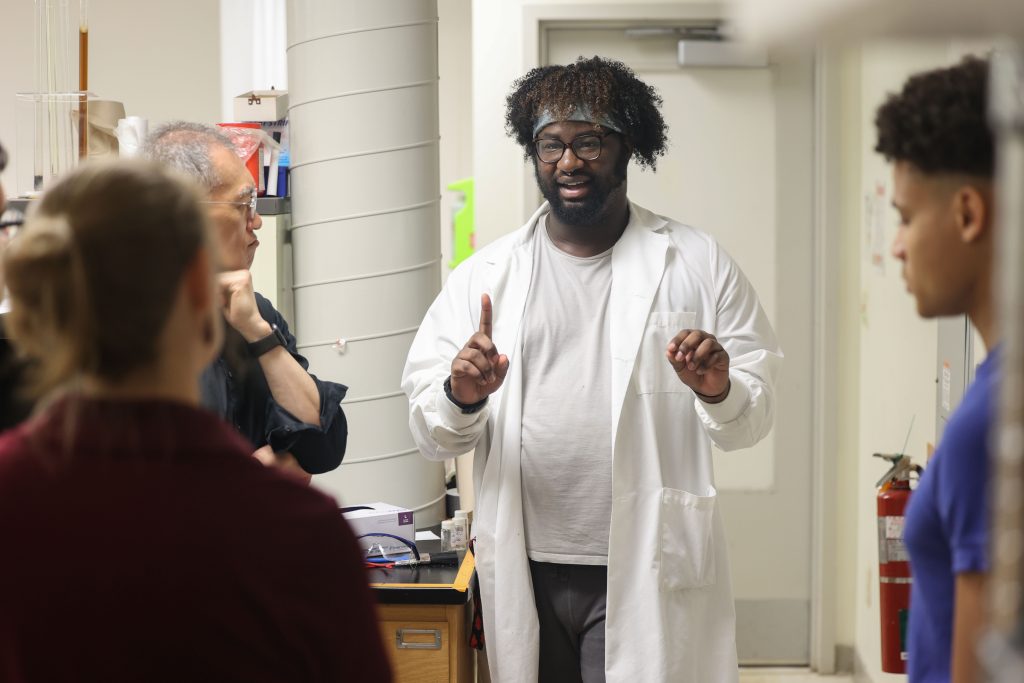
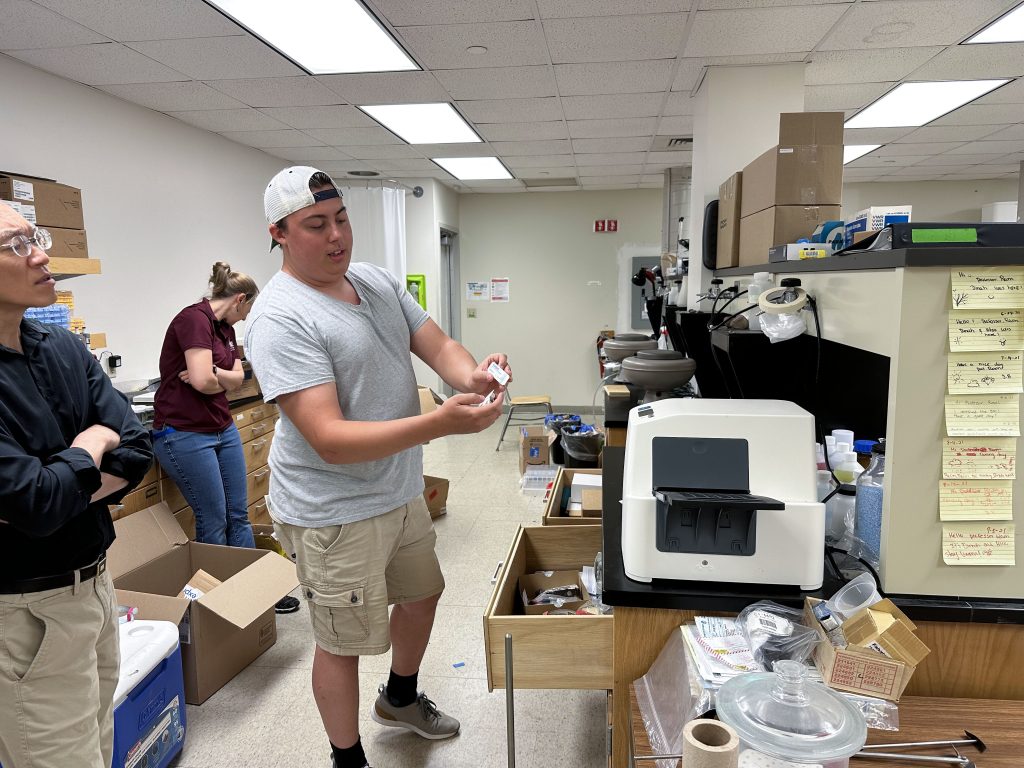
Chance Walker
Walker’s project looks to develop resilience and performance metrics for wastewater infrastructure in Upstate NY. The end goal for this project, under the advisement of Dr. Carolyn Rodak, is a publicly accessible general summary that succinctly communicates information related to wastewater infrastructure performance or in the Utica area, as most of the databases that already exist can be challenging to decipher.
Walker, who as part of the project has collected samples with Dr. Rodak at five different locations, enjoys the hands-on experience SURP provides, applying what he’s learned in his classes. The rising senior/Civil Engineering major also said some of the data collected has been “eye-opening.”
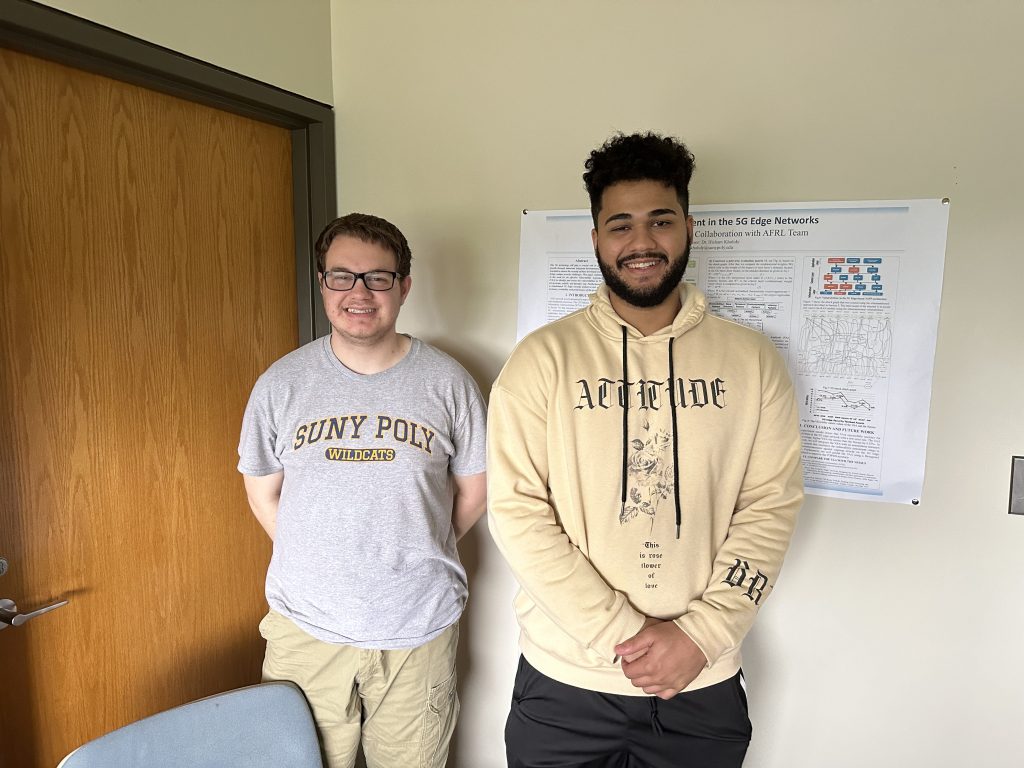
Andrew Fox/Anjony Tavarez
5G, and more importantly, its protection has been a big area of focus in the research world. Two SUNY Poly Network and Computer Security: Cybersecurity majors, Anjony Tavarez and Andrew Fox, have jumped into the area of 5G this summer, under the advisement of Dr. Hisham Kholidy.
Fox’s research uses the machine learning and Blockchain models to protect the exchanged parameters between open 5G architecture domains, while Tavarez is studying network slicing security with regard to 5G and beyond networks, harnessing the machine learning, blockchain, and federated learning techniques to protect the 5G Network. Their projects are related to the recently funded AFRL project that studies the 5G core security.
Both students spent the first half of the SURP experience reading a substantial amount of material in preparation for their time in the 5G testbed. Fox said he has enjoyed learning about 5G security and the hands-on aspect of SURP, while Tavarez has appreciated the perspective it brings, providing greater insight on what information is out there and what else he needs to learn.
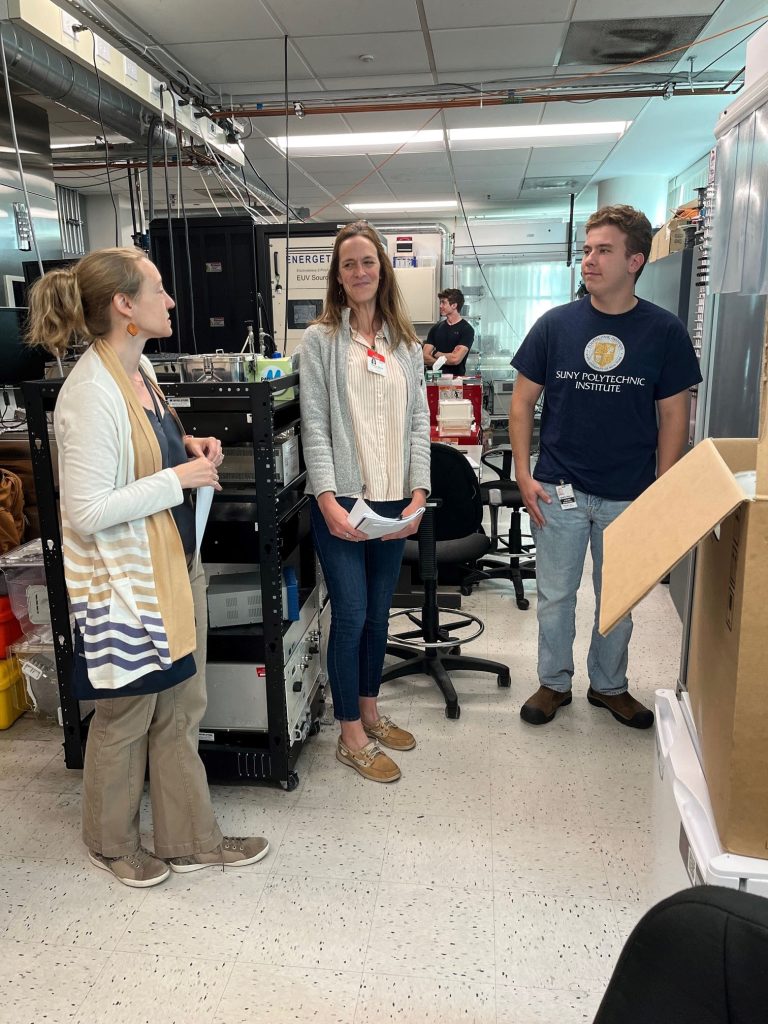
Lucas Braccini
Working with Dr. Gregory Denbeaux, SUNY Poly rising sophomore and Nanoscale Engineering major Lucas Braccini is exploring the fundamental processes of the photoresist coatings for semiconductor lithography. Specifically, they are studying how the different components of the photoresist segregate during the coating and baking processes.
Through SURP, Braccini said he’s learned that in a laboratory setting, more problems arise than he initially thought would.
“This taught me to be patient,” he said, “and trust in the process to get the best results from any experiment.”
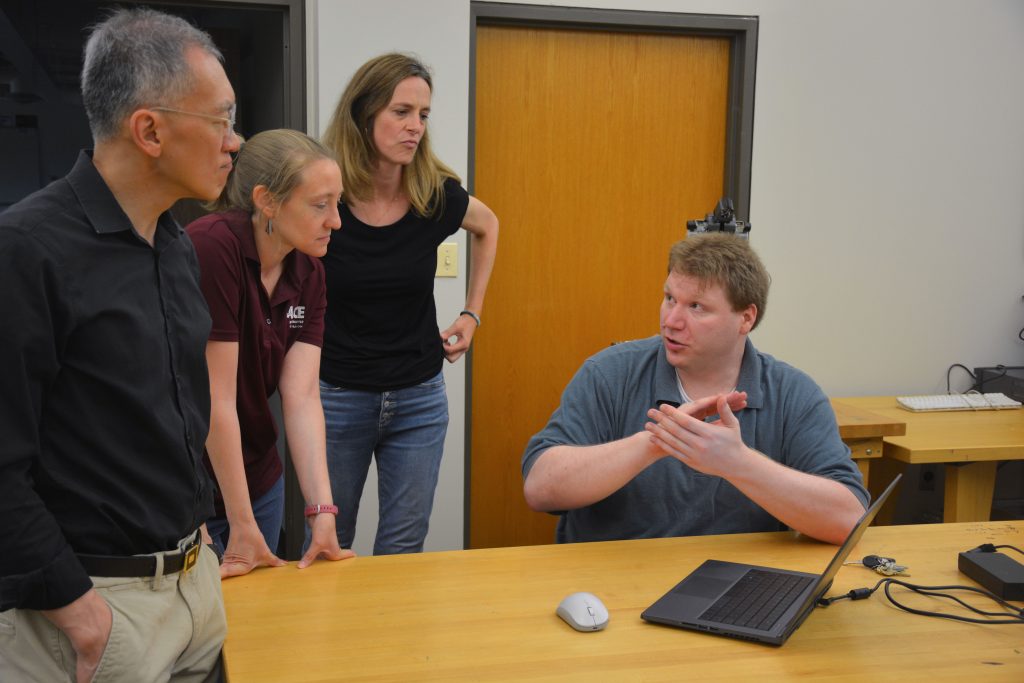
Michael Wilder
Under the guidance of Dr. Arjun Singh, Electrical and Computer Engineering major/senior Michael Wilder has been working on terahertz wireless communication research. More specifically, he is looking at phase noise, which are rapid, short-term, random fluctuations in frequency that often lead to decreased message accuracy. Wilder has been programming different modulation schemes to see which yield the greatest accuracy when phase noise is present.
Wilder notes that while communication may seem instantaneous to the average person, it has been interesting to see all of the things that happen on the backend that many of us take for granted. He also said that through SURP, all of the items he has learned in his classes have been brought together; using the analogy of baking a cake, he indicates he is using all of the “ingredients” in his repertoire.
Anthony Altieri
Many Artificial Intelligence (AI) platforms now exist for generating, for example, images and text. Anthony Altieri, working with faculty mentor Dr. William Thistleton, has successfully developed an image processing application for eliminating noise from corrupted images and he has hosted this app on the PaperSpace and SingularityNET platforms to illustrate machine intelligence approaches for data generation with applications in image processing.
During this project, Altieri gained experience hosting online applications through these platforms and developed insight and experience in the commercial AI environment, including cryptocurrencies, blockchain technologies, and Decentralized Autonomous Organizations. He took his project through a full stack development, from training neural network models, creating a user interface, managing containerization, and finally hosting and deployment.
Working with Dr. Daniel Jones, Daniel Gnajewki’s project analyzes Electroencephalography (EEG) Data. Having collected EEG data from 50 student participants in a modern EEG laboratory, signals are measured with 256 sensors at 1,000 Hz while participants provide emotional response to photographs. This project aims to analyze that data in understanding the neural activity of the brain in response to the images.
“One thing I’ve enjoyed about working with Dr. Jones this summer is the exposure to a new field of research and the application of MATLAB in said field,” said Gnajewski.
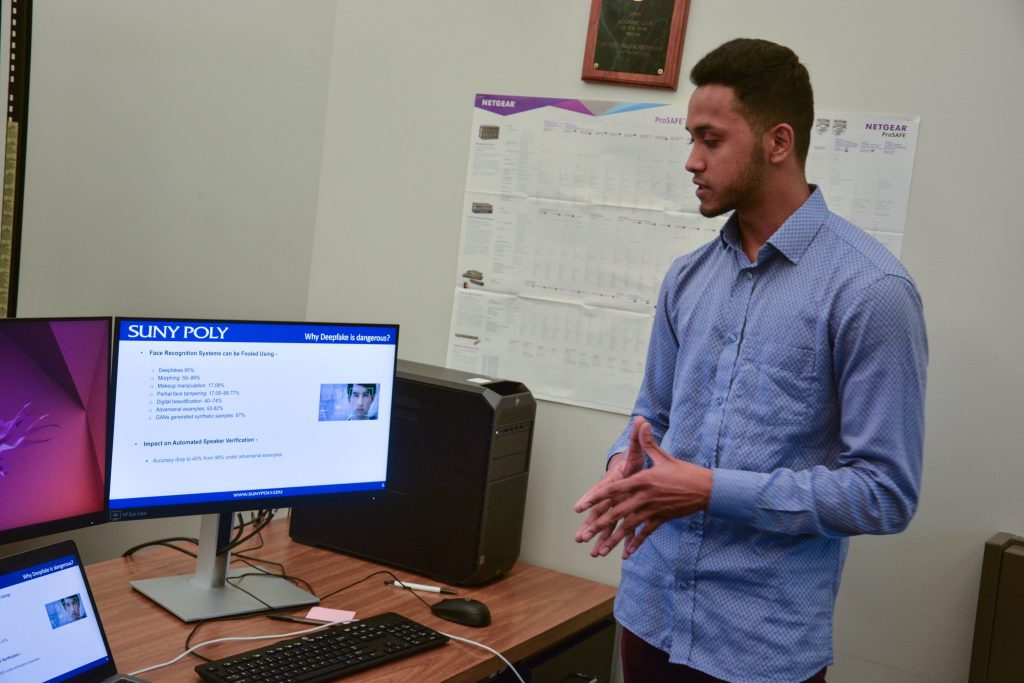
Shadman Khan
Deepfake technology has been used in manipulating images and videos, resulting in sometimes dangerous situations for individuals and society as a whole. The increased use of such tactics even has an impact on public opinion and trust. So how do you know if an image or a video is real or fake?
Computer and Network Security: Cybersecurity major Shadman Khan, who will graduate this December, has been using different artificial intelligence algorithms that can determine the authenticity of such images and videos. He has been working in collaboration with Dr. Zahid Akhtar.
Adam Zemanek
Solar cells (SC) are at the center of a project rising junior Electrical and Computer Engineering Major Adam Zemanek who is working with Dr. Iulian Gherasoiu, exploring safer approaches to the fabrication of solar cells and testing their efficiency.
One of their goals is to fabricate functional silicon SCs using only aluminum (Al) as dopant and to avoid the use of HF (a hazardous chemical) for the etch of the silicon oxide layers. Zemanek is receiving training in evaluating the results of the material processing using characterization techniques, such as SEM, x-ray energy dispersive spectroscopy, AFM and IV-PV measurements.
Zemanek, who has enjoyed the independent experimentation side of research through SURP, has been using the plasma cleaning, sputtering deposition and thermal annealing methods to clean silicon wafers, deposit, diffuse, and oxidize Al at different temperatures on the surface of the silicon wafers. At the same time, he has been trained in using the appropriate evaluation techniques after each fabrication step and to record and determine the effectiveness of these methods based on the characterization results.
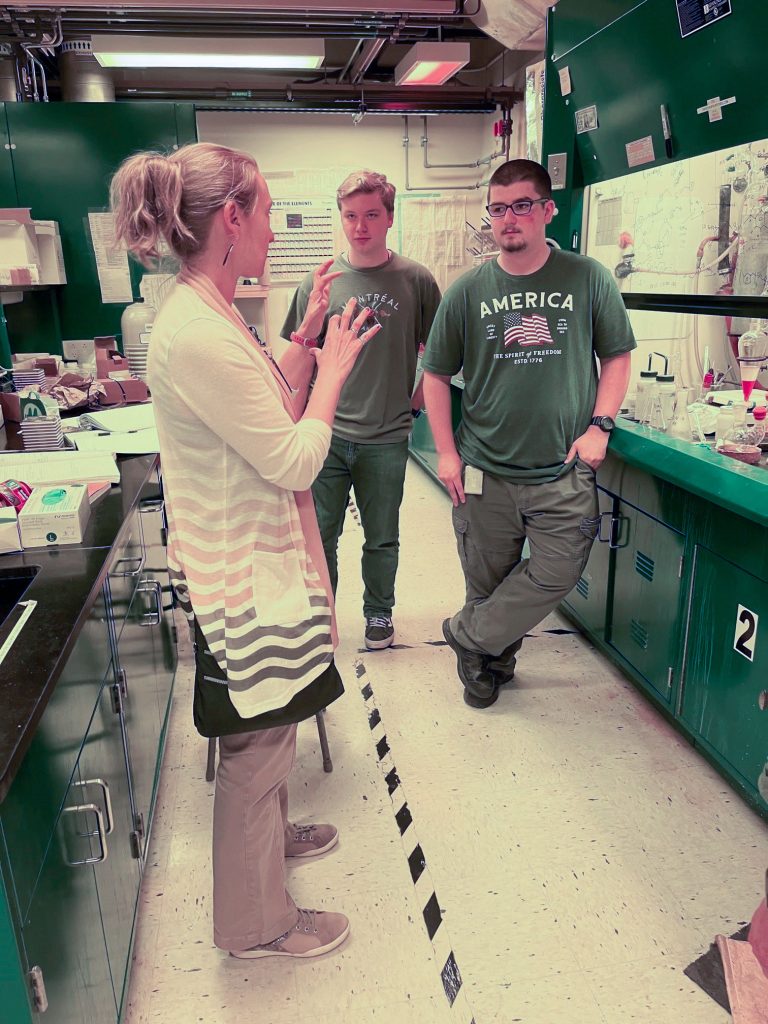
Douglas MacLeod/Anthony Tenace
Two SUNY Poly students, Doug MacLeod and Anthony Tenace, are exploring Molecular Organometallic Resists for Extreme ultraviolet (EUV) lithography with Dr. Robert Brainard. The goal of this project is to develop organometallic compounds that can be used as high-resolution photoresists in the microelectronics industry to fabricate future integrated circuits.
“This summer in SURP I am working on synthesizing organometallic compounds for use as EUV photoresists,” said Tenace. “I have been really enjoying creating these compounds that no one has ever made before; working on this interesting, cutting-edge work has been very rewarding so far.”
MacLeod added, “Previously, all the work I was doing had already been done previously, with a definite answer available. However, during SURP, I am doing work that has not been done before so I have to think things through and come up with my own solutions.”
Lauren Taylor
Dr. Ana Jofre has been developing an interactive website that allows users to explore an archive of over 3,000 Time magazines from 1923 to 2014. Lauren Taylor, as part of the SURP experience, is helping Dr. Jofre prepare the content for one of the pages within the website, which allows users to discover and learn more about key events that were covered by Time magazine between 1923 and 2014. Taylor is helping to collect and analyze the data for the page.
Taylor is a rising senior majoring in Interdisciplinary Studies with concentrations in English Literature and History. “I think the most important thing I’ve learned [this summer] is that every inch of history is important to who we are today,” said Taylor, “from the laws we make, to the injustices we fight, all the way down to the music we developed and the kind of pants we wore.”
More detailed project descriptions can be found on SUNY Poly’s website.
